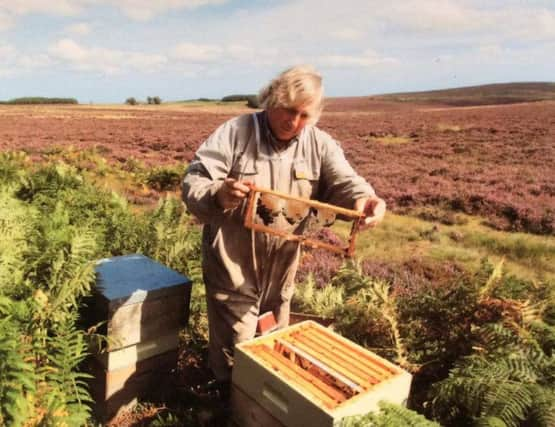It's survival of the fittest for bee colonies


The poor spring set the season back by three weeks and the condition of the colonies declined accordingly.
I was concerned that a very small number of colonies were suffering for the first time from a virus that killed all the adult bees but allowed the remaining bees to survive and get going again.
Advertisement
Hide AdAdvertisement
Hide AdI was also concerned that more colonies than normal were found to be queenless partly because of weather and partly as a result of a malaise that has spread through the colonies during recent years.
I first noticed that half the swarms that came out did not have a viable queen despite the fact that they obviously headed a prosperous colony only days previously. So, the stress of swarming caused the queen to stop laying for good. This is an alarming development especially in black bees.
It has been difficult to maintain colony numbers because the bees are becoming increasingly incapable of providing themselves with good long-living queens. No queen, no bees, no honey, no business. We are not anywhere near that yet but it is a nagging thought.
I might think that the problem was caused by agricultural chemicals but I am much more inclined to think that the varroa mite is responsible, wearing colonies down, stressing them and lowering their morale and resistance to disease.
Advertisement
Hide AdAdvertisement
Hide AdNo doubt transporting colonies into monocultures might not help but I have noticed that bees kept in very small numbers in ideal locations can be similarly affected.
When I first started beekeeping more than 50 years ago, honeybees were a powerful force in the land and now they are still there but only just and only because beekeepers like ourselves persevere with them. I don’t know what’s wrong with them and I might not be able to help them if I did.
Asking around as beekeepers do, it is the same story in Europe as well. Some say to treat hives three times a year to control the varroa and are no further forward. Others say to stop treating altogether and lose two-thirds of their colonies and perhaps their business too. Once these resistant bees out-cross into the wider gene pool, there must be a strong likelihood of varroa returning.
Our tiny colony that lives in our 12-frame observation hive has never been treated and continues to thrive and changes its queen every year. Another colony kept outside within a few yards often shows signs of varroa and has to be treated. This is very odd.
Advertisement
Hide AdAdvertisement
Hide AdAndrew Scobbie, who kept bees during the Isle of Wight epidemic, told me that this most virulent disease just appeared in a short space of time. We will have to hope that the same will happen again soon, although I doubt it. It was always the case that individual colonies were tip-top one year and down at heel a year or two later. Malnutrition and loss of vigour for many reasons has always been a controlling factor in indigenous populations.
As more colonies are lost by beekeepers so more are imported from anywhere and exotic and previously unknown diseases spread easily through local populations and become endemic.
The paralysis that I am seeing now is not the same disease that I might have seen in 1965. It is much more virulent. These troubles have all happened before in every sphere of livestock farming.
Medicating honeybees to make them better is not an option. It is much more a case of survival of the fittest, a process which might take decades.
We did get some honey in 2016, slightly more than expected fortunately.